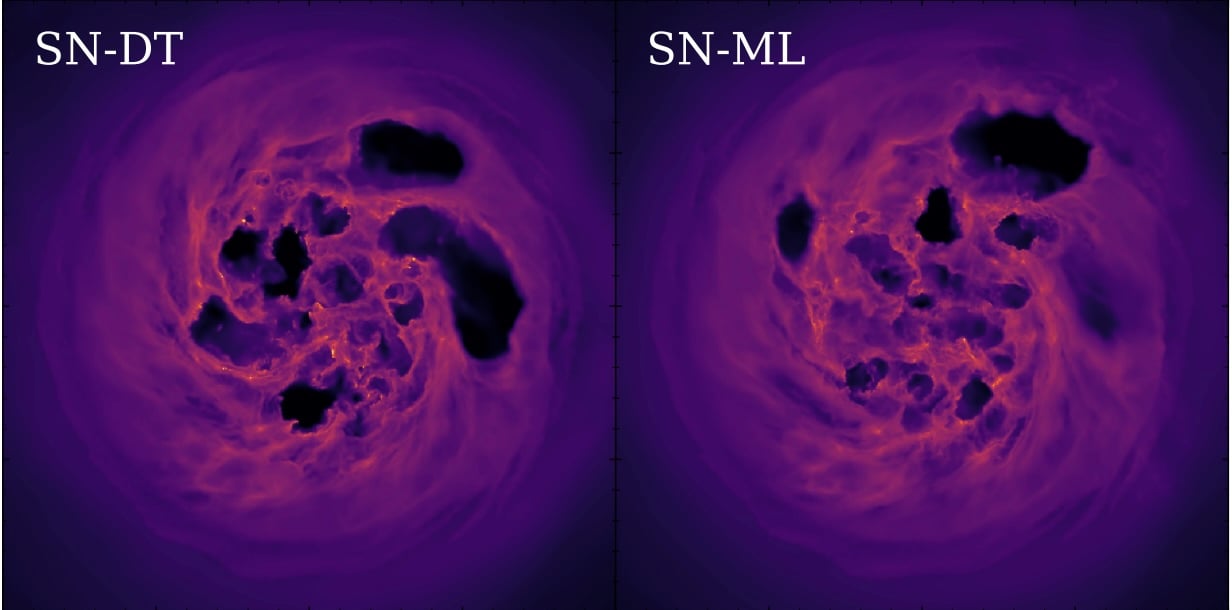At the RIKEN Center for Interdisciplinary Theoretical and Mathematical Sciences (iTHEMS) in Japan, the showdown between artificial intelligence and supercomputers has begun. It was here that Riken researchers, along with an international team of colleagues, used machine learning to enhance a simulation of galaxy evolution. The results were compared to direct numerical simulations, like those typically run on supercomputers, and AI won this round! In addition, this approach could shed light on the origins of the Milky Way and the elements essential to life as we know it.
The research was led by Keiya Hirashima, a Postdoctoral Researcher at iTHEMS and the Flatiron Institute’s Center for Computational Astrophysics. He was joined by colleagues from the Max Planck Institute for Astrophysics (MPA), the Research Center for the Early Universe at the University of Tokyo, the Center for Planetary Science (CPS) at Kobe University, New York University, Princeton University, the Tohoku University of Community Service and Science, and the Japanese machine learning company Preferred Networks, Inc. (PFN).
The simulation tackled a key issue when it comes to galaxy formation, which is the role played by supernovae. Since opportunities to study these events are few and far between, scientists must rely on numerical simulations based on data gathered by telescopes and other observation methods. These simulations are remarkably complex since they must account for cosmological forces and possess high temporal resolution so major events are not missed. This includes supernovae, which evolve from core collapse to remnant in a few months to a few thousand years, orders of magnitude smaller than what typical simulations can achieve.
In ordinary numerical simulations, supernovae occur on timescales about 1000 times smaller than what supercomputers can achieve. Moreover, simulations capable of this level of temporal resolution take 1-2 years to complete and are restricted to relatively small galaxies. To overcome this bottleneck, the team incorporated AI into a simulation based on ASURA code, which combines N-body and Smoothed Particle Hydrodynamics (SPH) methods to simulate galaxy formation. They also included the Framework for Developing Particle Simulator (FBPS) code to simulate chemical processes, and a machine learning (ML) model developed by Preferred Networks Inc.
This yielded what the team describes as the ASURA-FBPS-ML model, which allowed them to match the output of a previously modeled dwarf galaxy but got the result much more quickly. As Hirashima said in a RIKEN press release:
When we use our AI model, the simulation is about four times faster than a standard numerical simulation,” says Hirashima. “This corresponds to a reduction of several months to half a year’s worth of computation time. Critically, our AI-assisted simulation was able to reproduce the dynamics important for capturing galaxy evolution and matter cycles, including star formation and galaxy outflows.
To train their AI, the researchers fed it data from 300 simulations of an isolated supernova in a molecular cloud one million times the mass of our Sun. This produced a model capable of predicting the density, temperature, and 3D velocities of gas particles during the initial phase of supernova shell expansion, which typically lasts for 100,000 years after core collapse occurs. Compared to the kinds of direct numerical simulations performed by supercomputers, the new model yielded similar galactic structures and a star formation history within one quarter of the computing time.
This research illustrates the potential of incorporating AI into cosmological simulations, including models of how the entire Universe evolved since the Big Bang (ca. 14 billion years ago). “[O]ur AI-assisted framework will allow high-resolution star-by-star simulations of heavy galaxies, such as the Milky Way, with the goal of predicting the origin of the Solar System and the elements essential for the birth of life,” said Hirashima. Currently, the lab is using the ASURA-FBPS-ML model to run simulations of galaxies as large as the Milky Way, which could also lead to new theories about the origins of life in our galaxy.
The paper describing their findings appeared in The Astrophysical Journal.
Further Reading: RIKEN
